Welcome back to Preschool & Kindergarten Writing Lessons, a 10-week series from The Measured Mom and This Reading Mama {that’s me}. I don’t know about you, but I have thoroughly enjoyed this series so far!
The great thing about it is that even though we are targeting young children, older children, who may be reluctant or struggling writers, can also benefit greatly from these lessons! You may also want to check out our writing series for Primary Grade students to get even more ideas for teaching writing.
With very young writers, using dictation is such a great tool to help them see how writing works! As our young writers progress in their understanding of how our language works, we still want to model writing for them in meaningful ways, but instead of doing all the work, we ask them to come alongside us and “share the pen”. Today, I’d like to focus on helping children write by writing WITH our kids (also known as interactive writing or shared writing)…this has got to be my absolute favorite topic when writing with young children.
What Does it Mean to “Share the Pen”?
Simply put, shared writing (or interactive writing) is the process in which you AND the child sit and write something together. You write some of the message and the child writes other parts. In the classroom, it works BEST as a small group activity, where students take turns sharing the pen to help you write a message, sentence, or even story.
How Do I Know What the Child Should Write and What I Should Write?
Before beginning the shared writing time, it is helpful to think through:
1) What does the child know about writing?
2) What does the child confuse when writing?
3) What does my child not yet understand about writing?
With NJoy (age 5), I made a list. I looks something like this (some of the items on the list overlap a bit, and that’s ok):
What do you do with this information? So glad you asked!
- The things he knows about writing, I am going to ask him to do during our writing time together. (It’s called holding your child accountable.)
- The things he confuses when writing, I’m going to model for him and ask him to try with support if it occurs later in the writing session.
- The things he does not understand yet, I am going to model while I write it.
Before You Share the Pen
Before the actual writing time, I like to not only think through what the child knows, but then gather materials we may need to use for that writing session. For this writing time, I gathered his “word wall folder” (a folder with studied sight words in it) and two phonics charts: beginning letter sounds and consonant blends and digraphs- both of these can be found in the appendix of my ebook, Teaching Kids to Spell.
Helping Children Write by Sharing the Pen: The Process
These are the steps we take when sharing the pen. Please note that this is only ONE writing time together. Shared writing can take many forms, including writing a grocery list together, writing a thank you note, and MANY other reasons! No matter the reason, I want the writing to be meaningful to the child.
1. He drew a picture (of his favorite thing in the world- Angry Birds)
2. I asked him about his picture. “Tell me about your picture.”
3. He came up with one sentence about his picture. (The black bird is exploding beside the TNT.)
4. We shared the writing. I started with the capital T saying, “When we start a sentence, we begin with a capital T.” I made sure I modeled this because as you can see from that list I jotted down {earlier in this post}, he is not sure when to use capital letters and lower case letters. He finished the rest of The (because he knows that word).
When we came to sight words he has already learned (through Reading the Alphabet or this school year), I let him spell them himself. For example, the and is. He couldn’t remember how to spell is, so he looked it up in his “word wall” folder, a place that I keep all the sight words we’ve studied together.
I also help him accountable for phonics patterns. For example, when writing the word black, we looked at the blends chart, then he listened for and wrote the short a, and then he realized we have color words on our wall, so he used that to finish the word black.
Even though he has is on his sight word folder, he still wrote the s backward. Because shared writing is about modeling and teaching children about correct conventions, spellings, and about writing in general, I did ask him to erase it and try again. I showed him the s on the phonics chart and then drew a little dot so he’d remember where to start the s, and he corrected it.
5. We finished writing, sharing the writing as we went (for example, I spelled exploding, since I wouldn’t expect my 5 year old to understand those spelling patterns yet; although he did help me listen for the sounds in the words), and we re-read the text. After reading, he decided he wanted to add, “Boom! Boom!” to his text. We talked once again about capital letters and HE wanted to write the words himself with no help from me, so I let him. 🙂
We hung his work up on our wall and he has been proud to read it to anyone who will listen!
I know this is just a glimpse into one lesson, but I hope you can see that helping children to write by sharing the pen is such a RICH dialogue between the child(ren) and the adult about the purpose of writing, the conventions of writing, handwriting, and spelling . And if you can take the time beforehand to gather your thoughts about what the child knows, confuses and lacks understanding in in regards to writing, the activity is PERFECTLY fit for the child, developmentally appropriate.
To see all of the posts in this writing series, click HERE or the image above.
Follow This Reading Mama’s board Writing Ideas for Kids on Pinterest.
~Becky
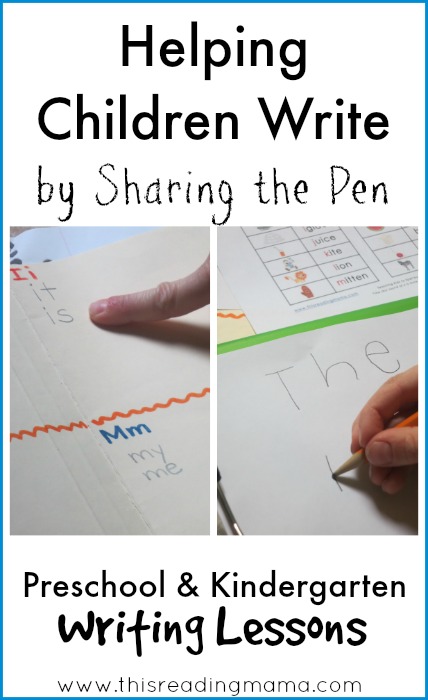
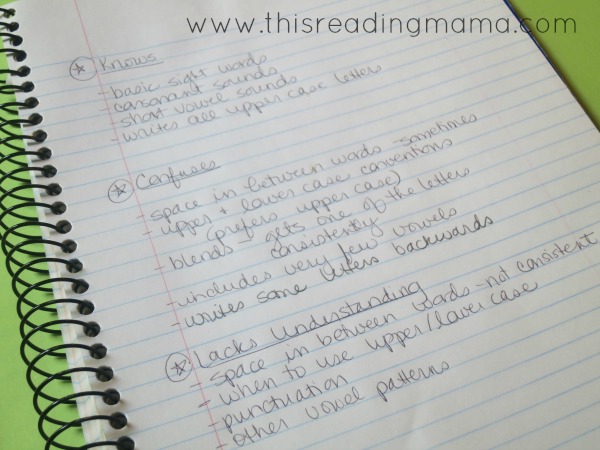
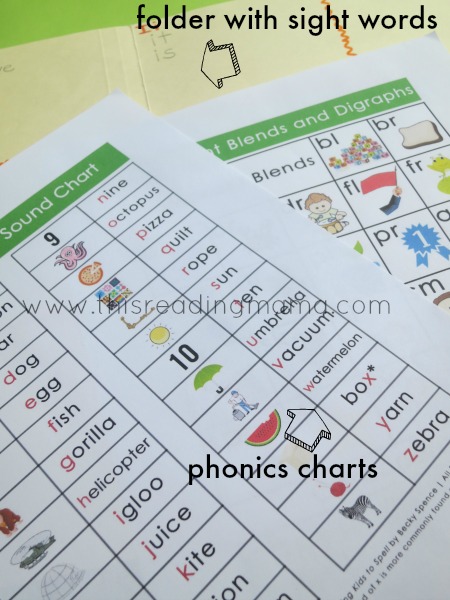
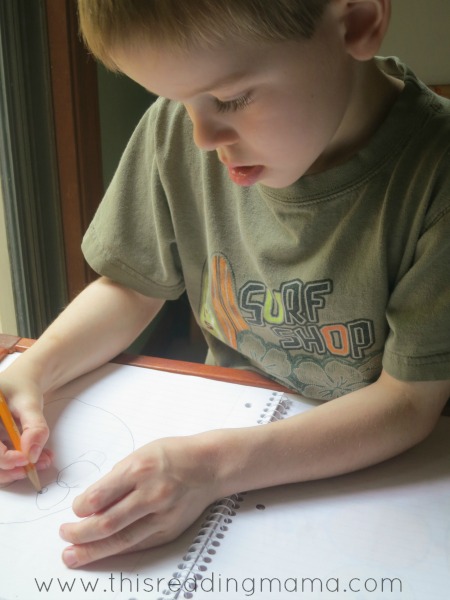
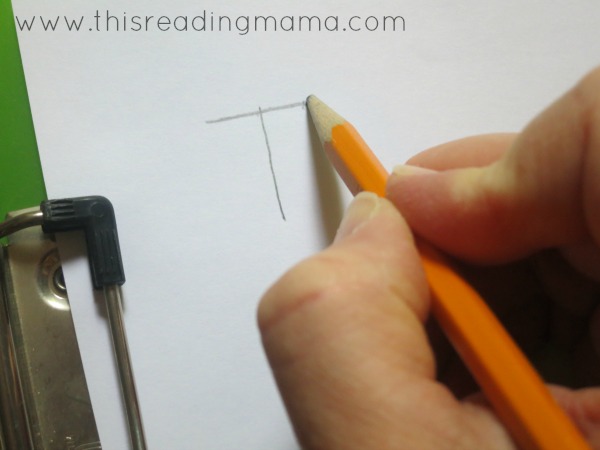
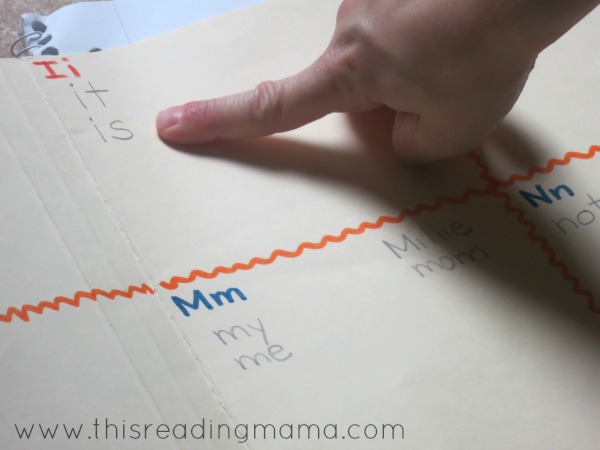

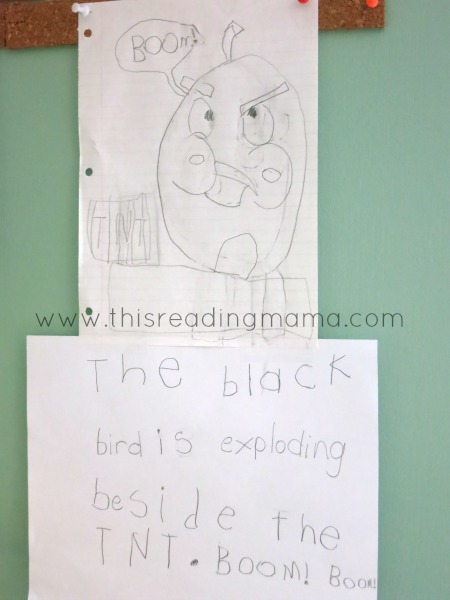
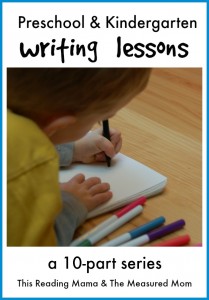
I did this a lot with my students. Thanks for reminding me about this wonderful writing tip to use with my son.
Great example! I did this in a PreK/K classroom during writers workshop. Works great! Although much of the time the kids work on their own with invented spellings, they sure are proud when they can show off these more polished stories!
I would have loved to have been a fly on the wall in your class.:)
I have not really thought too much about how to do this — you laid it out perfectly and I learned a lot! Definitely something to do with both my boys.
This is where I need to come back to! I had sent you a message ( now have Measured mom confused about my reply I wrote it somewhere in your blog not hers! Please apologize for me). I had been thinking about going through the simple writing lessons for 1st grade and up, but I think that this is exactly where I need to start! I am going to print these lessons out!
Thanks!
I have been looking for your alphabet lacing cards and can’t find them. I didn’t print them and they didn’t save. They were on your pinterest site and the link takes me to another person which doesn’t go to you. If you could send me the link to them I would be very appreciative. Deborah
I made that pack just for Free Homeschool Deals, so you can download them from her site. Thanks for asking! link–> http://www.freehomeschooldeals.com/free-alphabet-lacing-cards-instant-download/
Thank you so much for helping me find the alphabet lacing cards. They are really beautiful and I wanted to use them with every letter. I appreciate this so much. Deborah